British Trust for Ornithology Surveys
By Harry Green BTO Regional Representative Worcestershire.
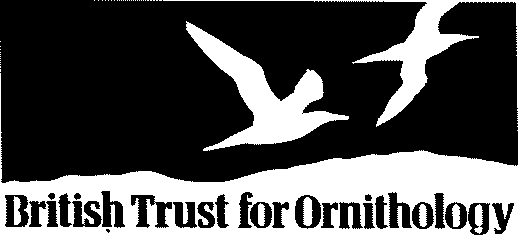 |
BTO surveys in 2001 were severely disrupted by the
Foot & Mouth Disease epidemic. Hopefully we shall get
back on track in 2002. As readers will know the results
of BTO surveys are of the greatest importance in national
monitoring of bird populations - whenever you see figures
quoted for declines or increases they are nearly always
derived from the work of BTO volunteer surveyors. The
Breeding Birds Survey (BBS), following on from the old
Common Bird Census, is the most important of the long-term
monitoring surveys. It is supplemented by the Water Birds
Breeding Survey (WBBS) which uses similar techniques
along water courses. Other important surveys are the
repeat survey of waders breeding in wet meadows in spring
2002, and the Winter Farmland Bird Survey. The following
is a review of the various surveys and the situation in
Worcestershire. |
Winter Farmland Bird Survey
This will be a survey of three full winters 1999-2000, 2000-2001
and 2002-2003 (next winter to replace the season lost to FMD) The
aim of this important surveyb is to fill gaps in knowledge of the
ecology of farmland birds in winter. It has three components: the
randon 1 km survey, Winter Walks, and Casual Records, and the
survey is on lowland farmland throughout Britain. The Random
Square Survey requires three visits each winter, the others are
not limited by location or number of visits required. The Randon
Squares covered in Worcestershire match the Breeding Bird Survey
squares and ten were surveyed in previous winters. This survey
requires detailed visits to farmland and is postponed until next
winter, but new observers are welcome to join in the other two
surveys which do not required detailed visits to farmland.
Casual Records of farmland birds (recording form available).
This is survey of significant flocks of farmland birds between
November and February within certain categories:
100 or more plovers (Golden Plover, Lapwing)
20 or more other waders (Snipe, Curlew)
100 or more thrushes and starlings (fieldfare, song thrush,
redwing, mistle thrush, starling)
20 or more partridge or doves (grey partridge, stock dove)
20 or more small passerines (skylark, meadow pipit, pied wagtail,
house sparrow, chaffinch, brambling, greenfinch, goldfinch,
linnet, redpoll, bullfinch, yellowhammer)
all scarce passerines (woodlark, stonechat, tree sparrow, twite,
snow bunting, reed bunting, corn bunting).
Winter walks recording farmland birds (recording form
available).
Observers simply record the species seen using fields, hedges
and farmland habitats adjacent to a route which is walked
regularly between November and February. Every time you do the
walk you collect records. Route chosen by observer and should be
at least 1km long.
I have not seen all the records collected by these surveys in
previous winters in Worcestershire but I know that several
observers have contributed. If anyone wants to take part please
ask for recording forms.
Pilot Winter Mammal Monitoring Survey
For more information on this see elsewhere in this newsletter
under the Worcestershire Mammal Atlas project.
Waterbirds Breeding Survey
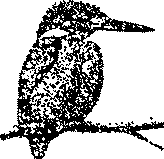 |
This is basically a transect-style survey along a
waterway randomly selected in tetrads (2x2 km squares) of
the national grid. The methods used are similar to the
BBS (see later). We have three surveys running in
Worcestershire: two on the River Teme and one on the
Worcester-Birmingham Canal. BTO are probably going to ask
for more sites in 2002 so more volunteers may be required.
|
Breeding Waders in Wet Meadows
We have a large number of sites in Worcestershire along the
main river valleys.. The method is to visit the sites three times
between mid-April and the end of June with at least two weeks
between visits. Each visit should preferably be between dawn and
midday. The areas need to be covered systematically and waders
seen are recorded on maps provided. This survey was postponed
from last spring. I have no observers so far and we badly need
help, although I hope for help in the south by Mike Smart and his
team from Gloucestershire. Any offers of help would be welcome -
please contact me as soon as possible.
Birds on Lowland Grassland
I have little information about this survey in Worcestershire
although I gather three surveyors of BBS squares were contacted
by BTO on some aspects. However, I have three sets of forms for
the postponed 2001 summer survey and hopefully they will be used
to complete the work in summer 2002 as an adjunct to BBS survey.
The aim is to assess the sue of grasslands by birds in summer.
Peregrine Survey
This is mainly organised by the Raptor Study Group and
peregrine enthusiasts and aims to check existing, past and
potential breeding sites in a repeat of earlier surveys. It was
postponed last year but should go ahead in spring 2002. We do
have a local enthusiast who will (hopefully) visit Worcestershire
sites. However, peregrines are about in the county and if anyone
locates breeding birds I should be grateful if they could get in
touch with me. Any information given to me will be treated in
confidence. We look forward to the first records of breeding
birds on buildings or pylons!
Breeding Birds Survey
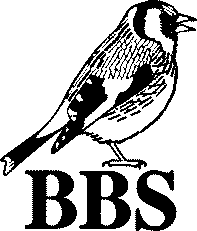 |
This continuing annual survey is most important in
monitoring breeding birds throughout UK. It is now based
on around 2,400 randomly selected 1x1 km squares of the
national grid throughout Britain. We have 51 squares in
Worcestershire. These have been well-covered in previous
years but the survey could not go ahead in 2001, although
seven Worcestershire squares were covered in places safe
from FMD: four in Wyre Forest, one in Worcester city, and
two in suburban Birmingham. The main methodology is to
walk two transects in a 1x1km square recording the birds
on special forms, and collecting data on habitat. Once a
route is established this is usually achieved by two
visits between April and mid-May, and between mid-May and
end of June. For a new square an early visit is need to
plan the route. To me this is our most important on-going
survey . I hope we can pick up the full coverage again in
2002. I know that a few observers will not be able to
continue so I do need need observers. If you would like
to join please get in touch with me as soon as possible.
I have squares available in different parts of the county.
|
Heronries Census
 |
We have two known heronries in Worcestershire (one
just N and one just S of Worcester) and Shaun
Micklewright is the count organiser. If you become aware
of herons nesting elsewhere please get in touch with me
as soon as possible. The British Heron Census is the
longest running bird census in the world spanning about
75 years of counts. |
Garden Birdwatch
This survey has been running for five years and we have over
100 counters in Worcestershire and about 15,000 nationally.
Although quite simple in concept it is providing some fascinating
information about the numbers of birds visiting gardens and the
timing of their visits throughout the year. Participants receive
their own newsletter and special recording forms. If you are
interested I can provide a leaflet giving further information.
New Projects
Migration Watch
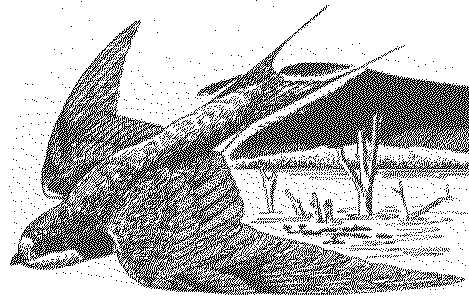 |
Starting 1st March 2002 Migration Watch is a web-based
project which will trackspring migration through the
country. The idea is that bird watchers will submit their
daily records using specially designed, simple to use
forms on the BTO web site. These can be sent from any
regularly watched site. Migration will be tracked through
the country. If you don't have a computer, try web access
at a library or school, or ask a friend! There are
introductory pages on the BTO web site at www.bto.org. It
will be updated regularly and it is hoped that observers
will register their interest in early February. When the
project is up and running you will be able to see daily-updated
maps on the web site showing various species moving
through the country. This is a new and novel approach to
the study of bird migration and I urge you all to join in!
|
BTO London Bird Project
This is a survey to discover exactly what birds use London's
green spaces and is a very exciting project, though not to
Worcestershire-based observers!
Nightingales
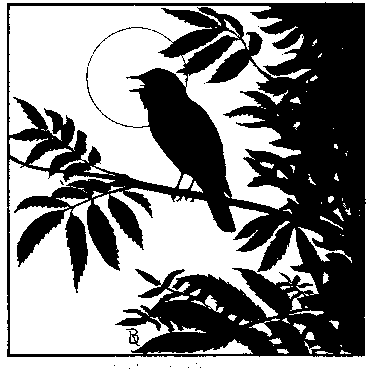 |
There is no official nightingale survey in 2002 but I
am always pleased to received information on singing
birds. Hopefully a phone-in recording system will again
be available through Worcestershire Wildlife Trust (01905
754919). The data collected over the last few years,
including the 1999 BTO survey, is being used to prepare a
leaflet encouraging landowners to create nightingale (scrub)
habitat on their land.
|
| |





